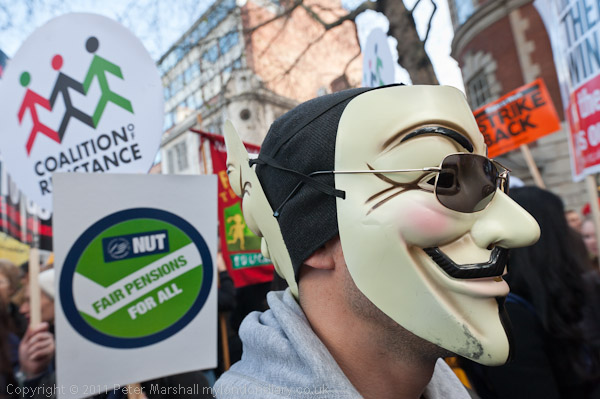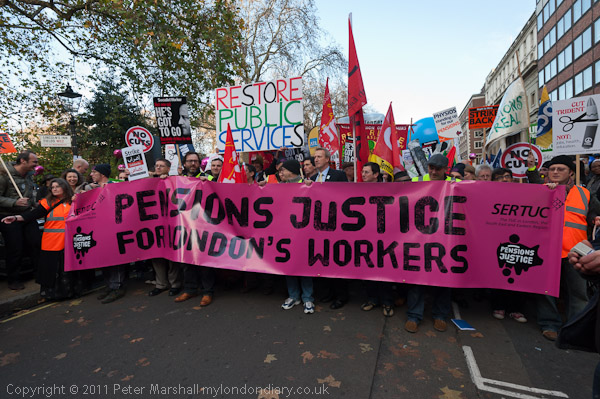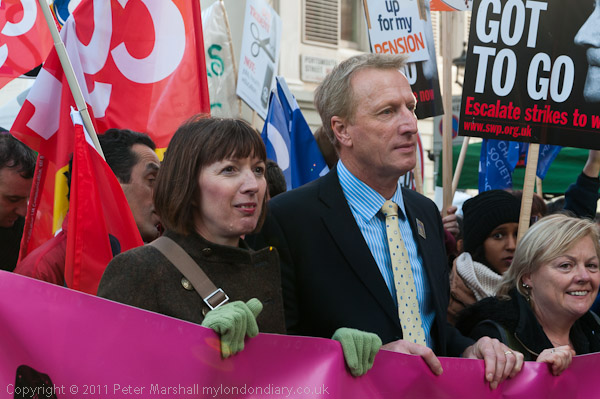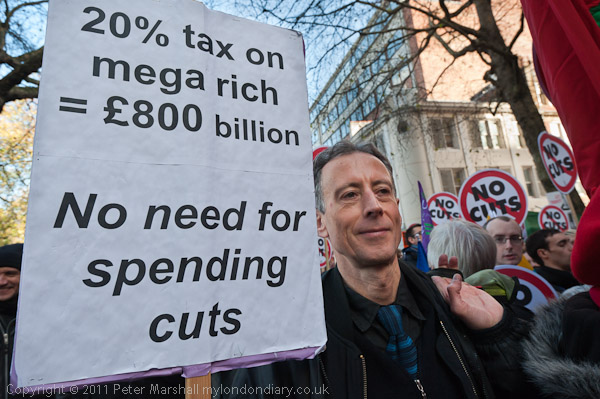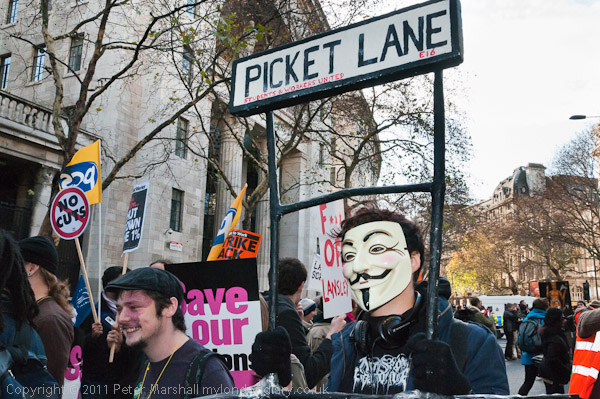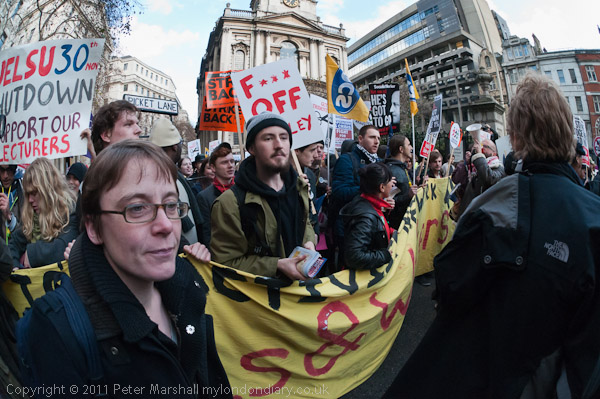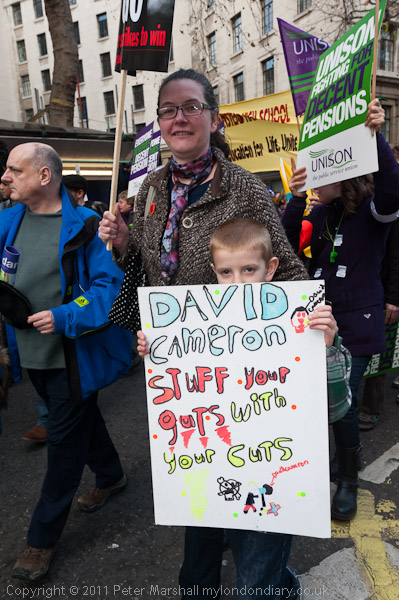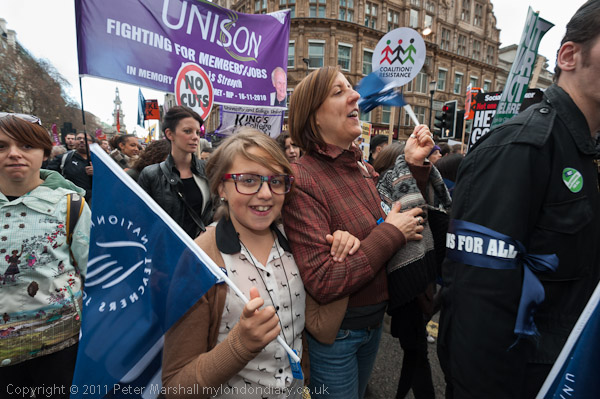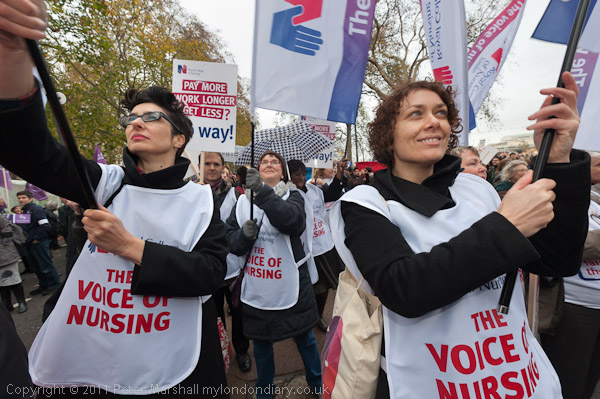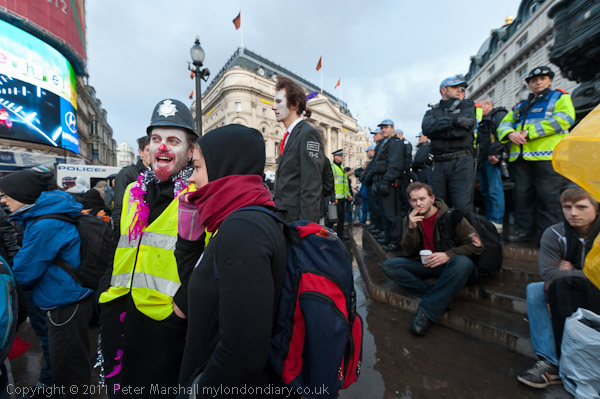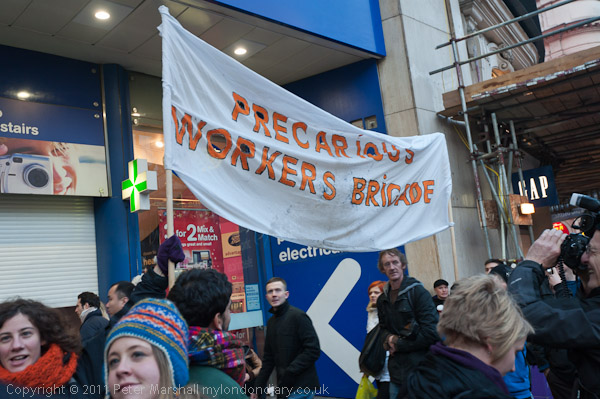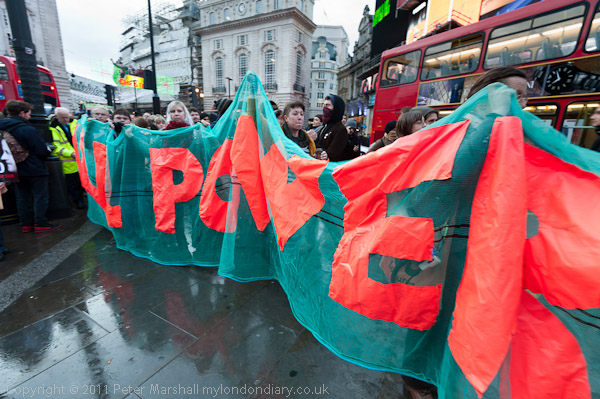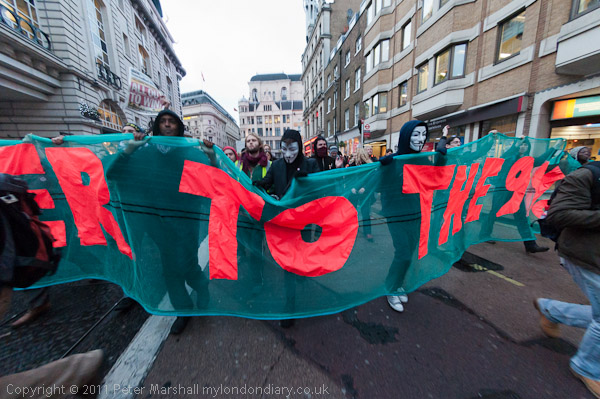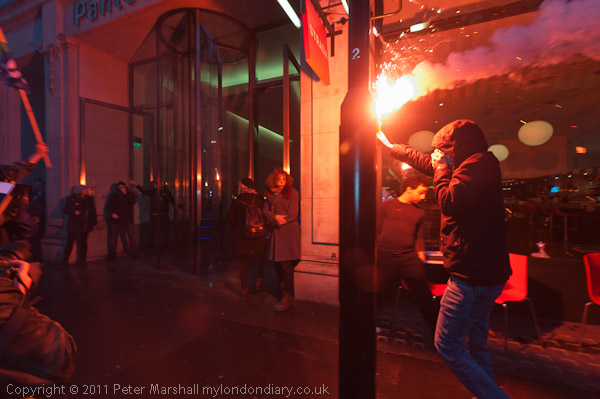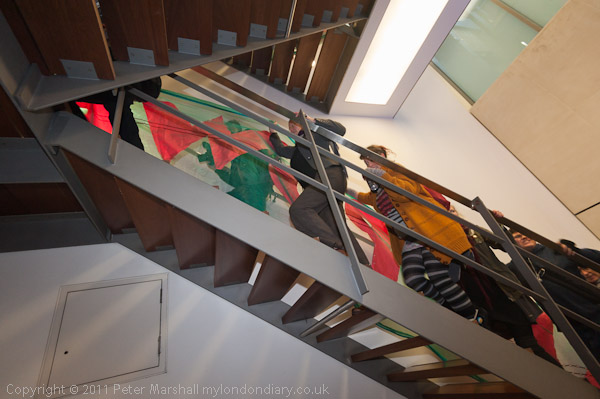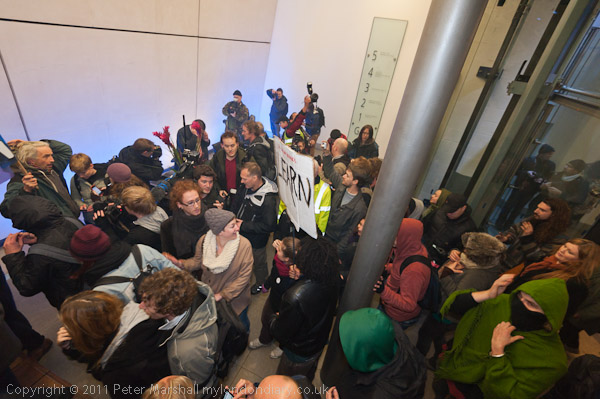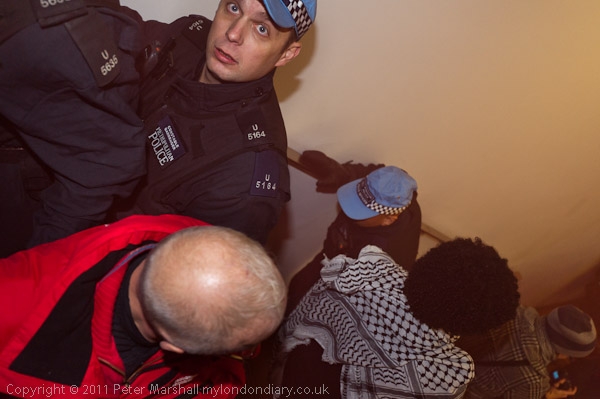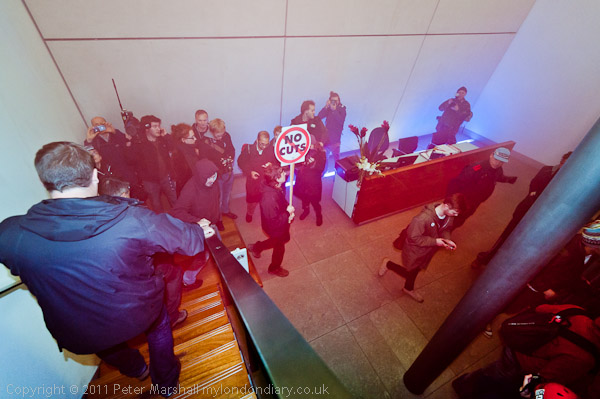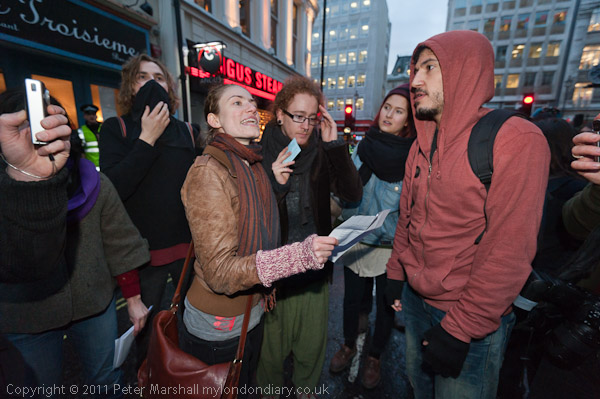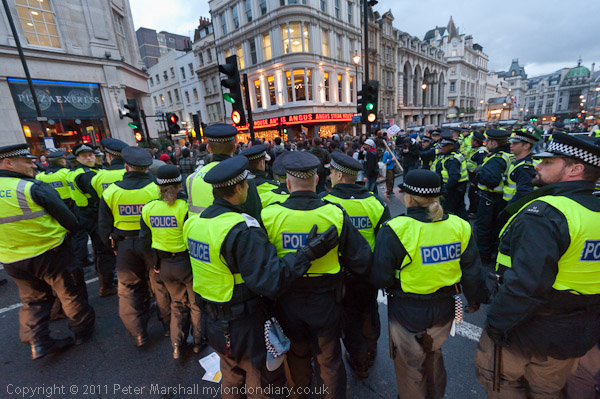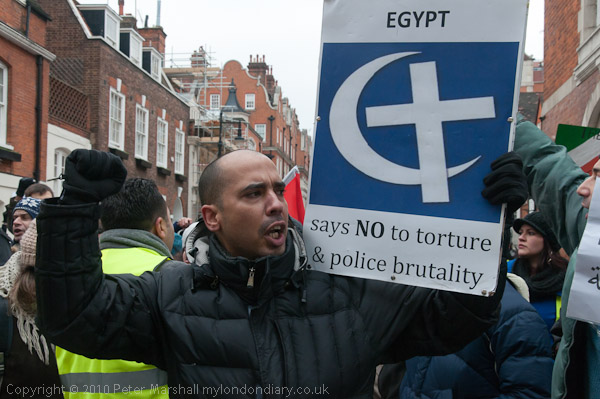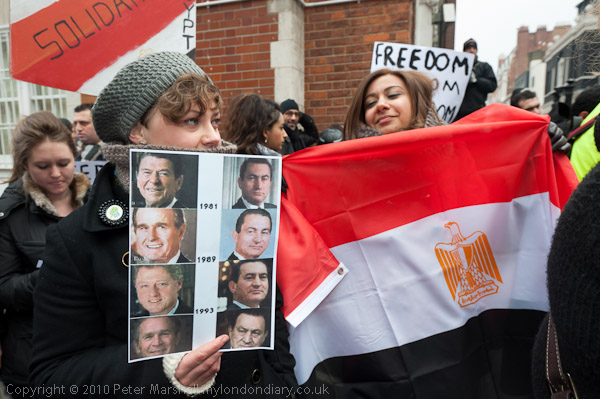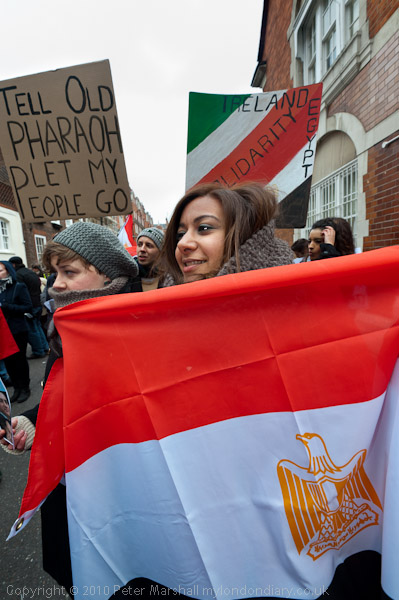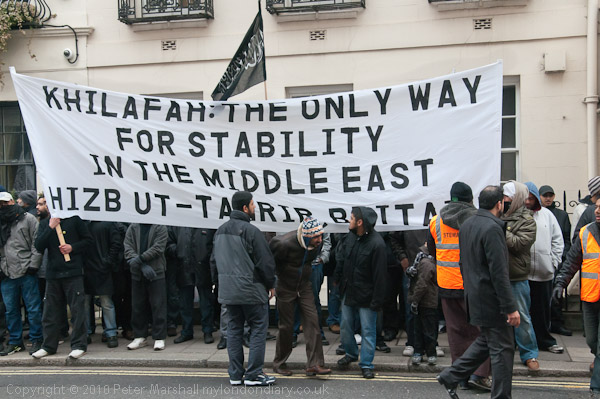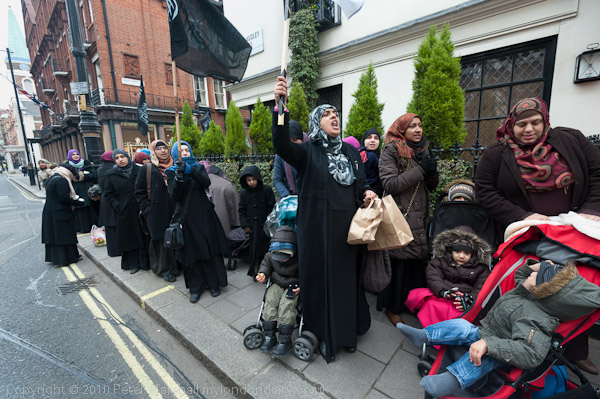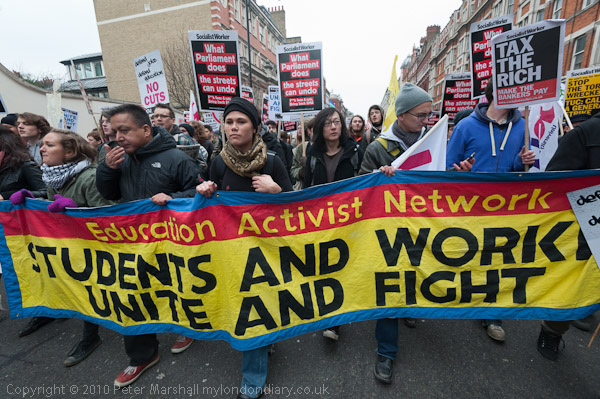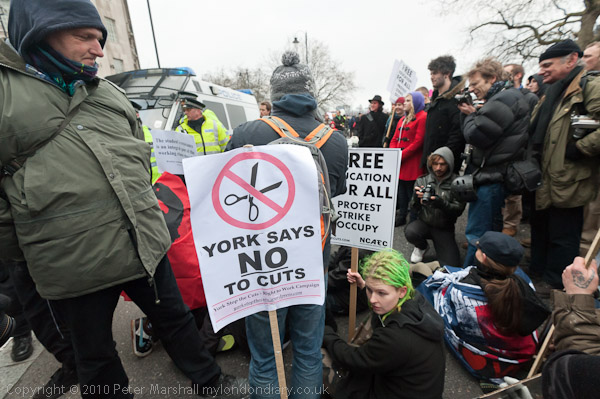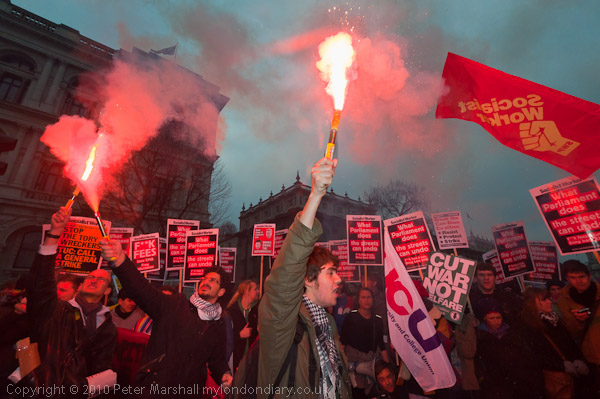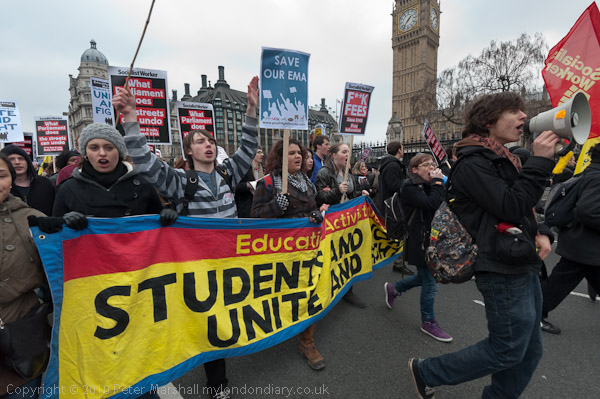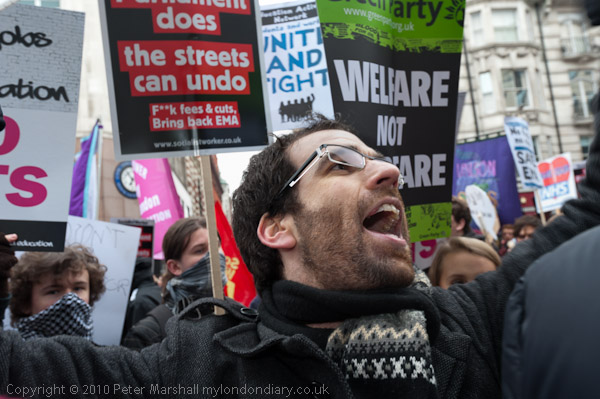Occupy London Begins: On Saturday 15 Oct 2011 over 2000 protesters came to St Paul’s Cathedral as a part of a world-wide ‘Occupy’ protest “Inspired by Occupy Wall Street and the Arab Spring, and answering to the call out made by the Spanish Plataforma ¡Democracia Real YA! in May 2011 for a Global Day Of Action” and Occupy London began.
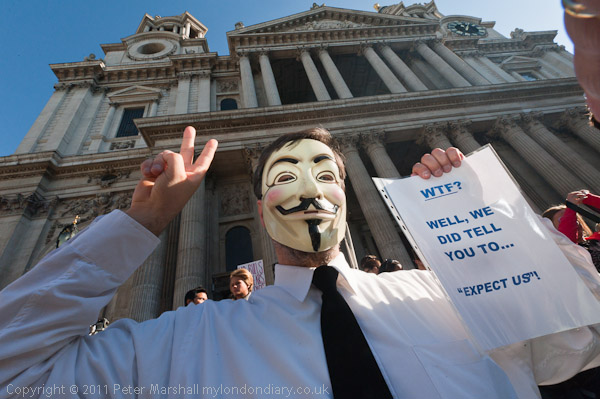
Similar protests were taking place in “Spain, Rome, New York, Portugal, Chile, Berlin,Brussels, Zageb, and many more … inspired by the example of Occupy Wall Street and the Arab Spring.”

Although people from various groups were present, including the Education Activists Network, Socialist Workers Party, Anonymous, Right to Work, UK Uncut, South London Solidarity Federation and there were several well known figures present who spoke including Peter Tatchell and Julian Assange, the whole movement deliberately lacked overall organisation with all decisions being taken by General Assemblies with the slogan ‘No Leaders, No Hierarchy’.

The event had actually come about from one such assembly on Sunday 9th October at the end of the ‘Block the Bridge NHS Protest‘ when a ‘General Assembly’ of several hundreds had come together at the north end of Westminster Bridge to discuss and endorse a planned occupation of the London Stock Exchange area.
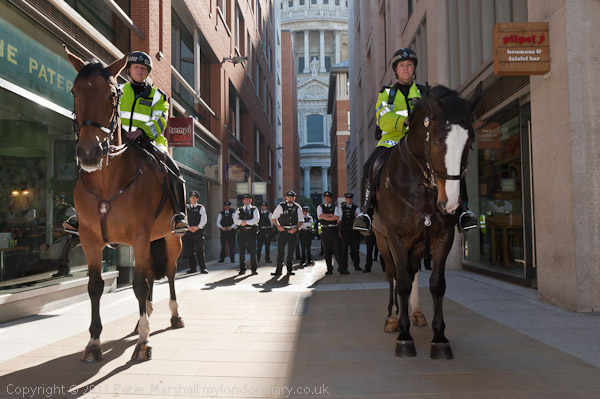
In response to this the Stock Exchange obtained a High Court injunction to prevent public access to Paternoster Square, one of the increasingly large areas which appear to be public space in the city but are actually now privately owned, although previously Paternoster Row was a public street and police were present in force to enforce this injunction.
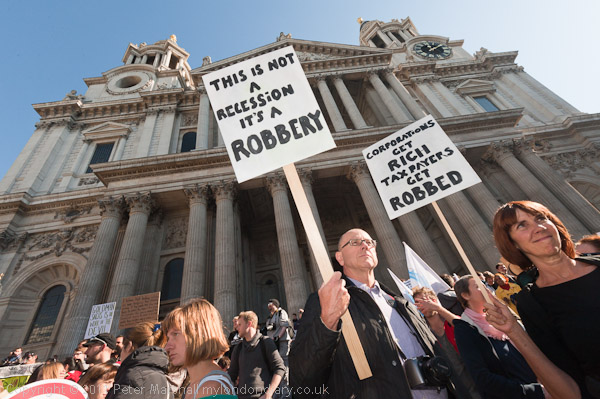
Most of the several thousand protesters were intent on an entirely peaceful protest, calling for a democratic revolution to “fight for a new political and economic system that puts people, democracy and the environment before profit.” They saw that “Our political elites have chosen to protect corporations, financial institutions and the rich at the expense of the majority.“
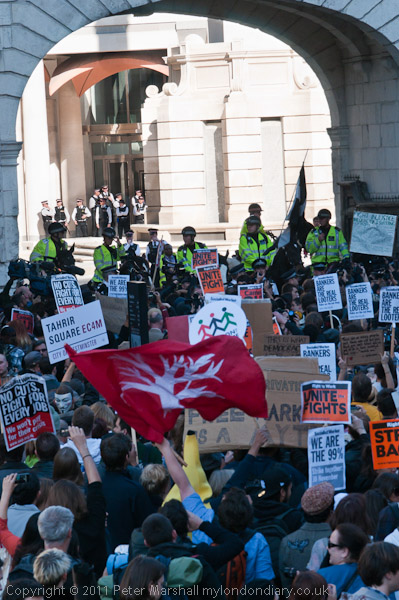
After a few short speeches a few hundred protesters, led by the banner of the Education Activist Network made and attempt to enter the square through Temple Bar, but police on foot and horses were waiting for them, and the relatively narrow entrance of the Bar, moved here a few years ago, was designed to be easily defended.
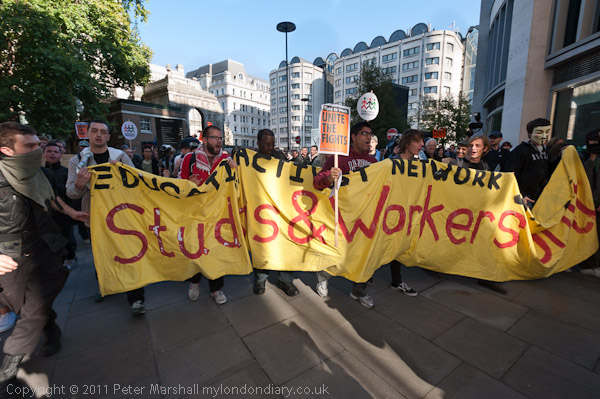
They then made a tour around the block containing the Stock Exchange but found the narrow passages leading to Paternoster Square heavily defended by police. When finally they found one with only a thin line of a thin line of police, the protesters hesitated for long enough for the police to bring up reinforcements. It was probably for the best as they would have immediately been easily kettled inside the square had they got in.

Eventually a General Meeting began on the steps of St Paul’s. There were a few minor scuffles when police pushed protesters around, which could probably have been avoided had police explained clearly that they only intended to clear a path to clear a path into and out of the cathedral at one end of the steps. Several people were arrested then and later.

I decided to leave, as it really seemed unlikely that anything much more would happen for some time. As I was leaving, police decided to block Ludgate Hill, but along with a group of several hundred protesters I managed to get through their line as it was forming.
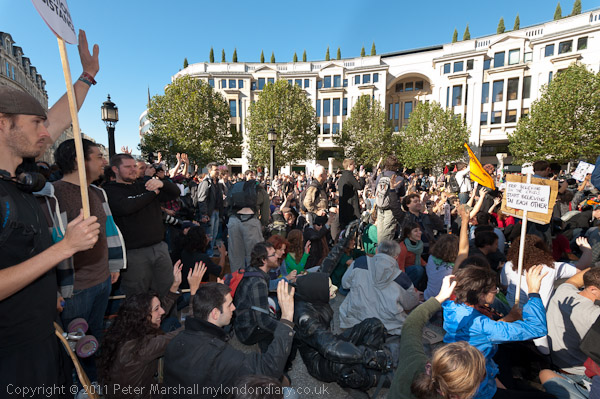
Police continued to clear protesters from the steps of St Paul’s and urging people to leave the area, but many set up tents on the level area of St Paul’s Churchyard and the occupation had begun – and was to remain in place until finally removed on 28th February 2012. You can read a great deal about the occupation in the Occupy London web site which includes the various statements agreed by consensus at Occupy London General Assemblies. Unfortunately Wikipedia’s article on Occupy London is unusually poor and misleading about the events of 15th October.
More at Occupy London Kept Out Of Stock Exchange
Flickr – Facebook – My London Diary – Hull Photos – Lea Valley – Paris
London’s Industrial Heritage – London Photos
All photographs on this page are copyright © Peter Marshall.
Contact me to buy prints or licence to reproduce.
